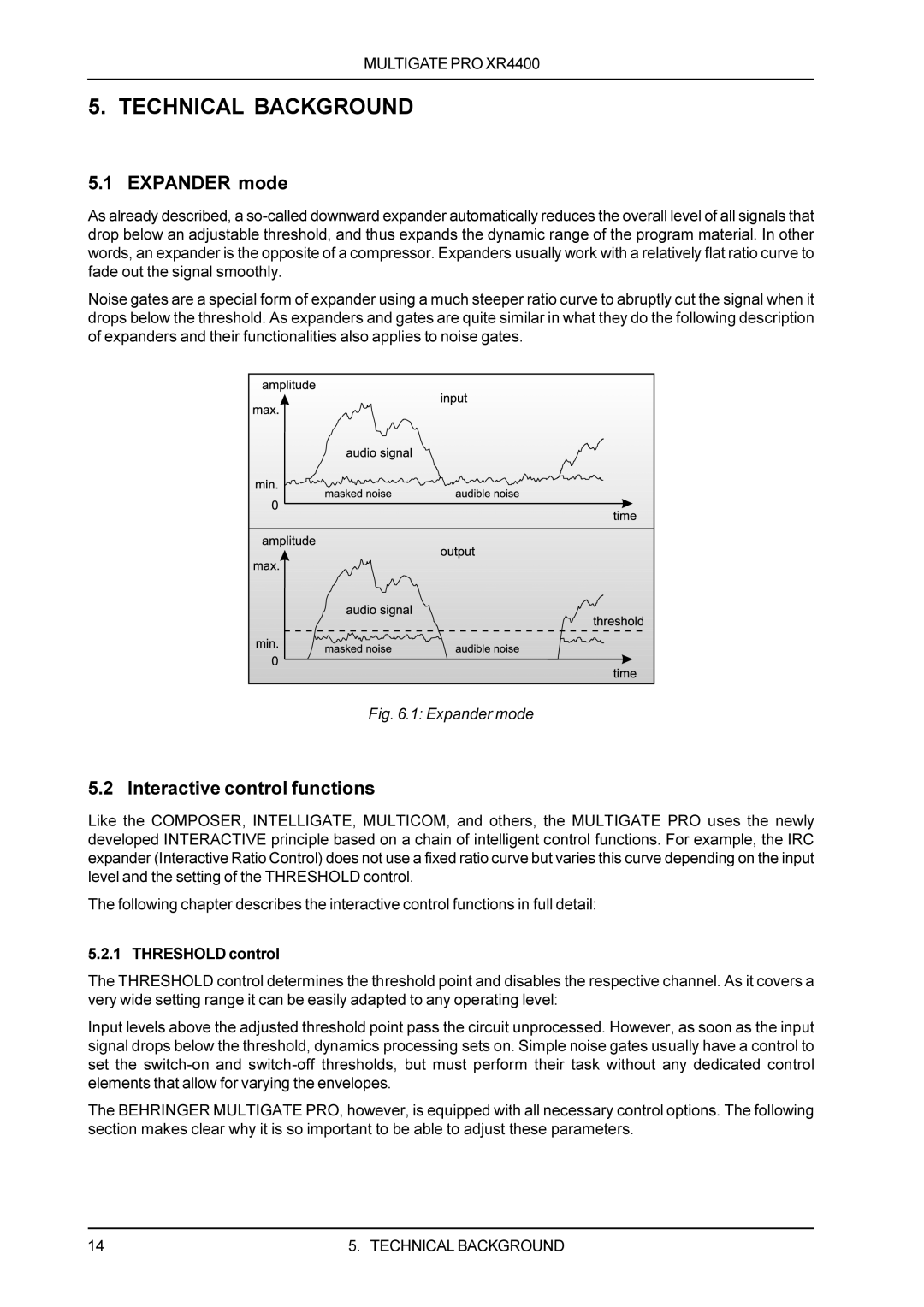
MULTIGATE PRO XR4400
5. TECHNICAL BACKGROUND
5.1 EXPANDER mode
As already described, a
Noise gates are a special form of expander using a much steeper ratio curve to abruptly cut the signal when it drops below the threshold. As expanders and gates are quite similar in what they do the following description of expanders and their functionalities also applies to noise gates.
Fig. 6.1: Expander mode
5.2 Interactive control functions
Like the COMPOSER, INTELLIGATE, MULTICOM, and others, the MULTIGATE PRO uses the newly developed INTERACTIVE principle based on a chain of intelligent control functions. For example, the IRC expander (Interactive Ratio Control) does not use a fixed ratio curve but varies this curve depending on the input level and the setting of the THRESHOLD control.
The following chapter describes the interactive control functions in full detail:
5.2.1 THRESHOLD control
The THRESHOLD control determines the threshold point and disables the respective channel. As it covers a very wide setting range it can be easily adapted to any operating level:
Input levels above the adjusted threshold point pass the circuit unprocessed. However, as soon as the input signal drops below the threshold, dynamics processing sets on. Simple noise gates usually have a control to set the
The BEHRINGER MULTIGATE PRO, however, is equipped with all necessary control options. The following section makes clear why it is so important to be able to adjust these parameters.
14 | 5. TECHNICAL BACKGROUND |
